ST Microelectronics S R L ZB260A ZigBee Module User Manual SPZB260
ST Microelectronics S.R.L. ZigBee Module SPZB260
Users Manual
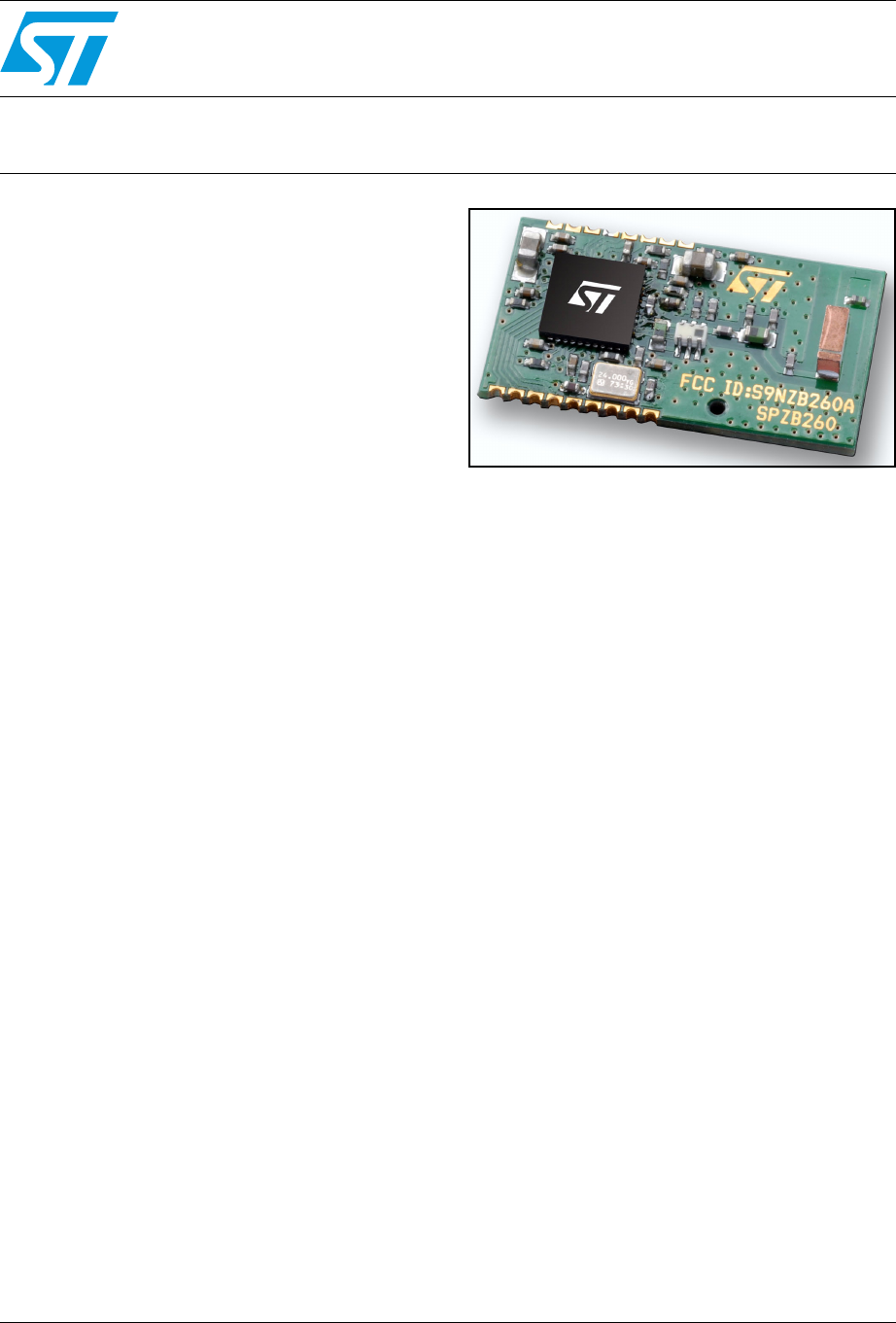
September 2007 Rev 1 1/14
14
SPZB260
ZigBee module
Features
■Integrated 2.4GHz ,IEEE 802,15,4-compliant
transceiver:
– 0 dBm nominal TX output power
– -92 dBm RX sensitivity
– + 2 dBm in boost mode
– RX filtering for co-existence with IEEE
802.11g and Bluetooth devices
– Integrated VCO and loop filter
■Integrated IEEE 802.15.4 PHY and MAC
■Controlled by a Standard Serial Line for an
easy interface of host microcontrollers (SPI)
■Embedded flash and integrated RAM for
program and data storage
■On board 24 MHz stable Xtal
■Integrated RC oscillator ( typ 10KHz) for low
power operation
■1 µA power consumption in Deep sleep mode
■Watchdog timer and power on reset
■Pins available for Non-intrusive debug
interface (SIF)
■Single supply voltage 2.1 to 3.6 Vdc.
■Available Link and Activity outputs for external
■Indication / monitor
■CE compliant
■FCC compliant ( FCC ID:S9NZB260A )
Applications
■Industrial controls
■Sensor networking
■Monitoring of remote systems
■Home applications
■Security systems
■Lighting controls
Description
SPZB260 is a low power consumption ZigBee
module optimized for embedded applications. It
enables OEMs to easily add wireless capability to
electronic devices.
The module is based on SN260 ZigBee Network
Processor which integrates a 2.4GHz, IEEE
802.15.4-compliant transceiver as well as IEEE
802.15.4 PHY and MAC.
24 MHz high stability Xtal is available aboard the
module to perform the timing requirements as per
ZigBee specifications.
A single supply voltage is requested to power the
module. An integrated 2.5 GHz specific Murata
antenna is aboard. The voltage supply also
determines the I/O ports level allowing an easy
interface with the host system.
The module is controlled by means of a standard
serial interface (SPI) allowing the connections to a
variety of Host microcontrollers.
( for other information and details, please refer to
SN260 Datasheet available at www.st.com )
www.st.com

Contents SPZB260
2/14
Contents
1 Block diagram . . . . . . . . . . . . . . . . . . . . . . . . . . . . . . . . . . . . . . . . . . . . . . 3
2 Pin settings . . . . . . . . . . . . . . . . . . . . . . . . . . . . . . . . . . . . . . . . . . . . . . . . 3
2.1 Pin connections . . . . . . . . . . . . . . . . . . . . . . . . . . . . . . . . . . . . . . . . . . . . . 3
2.2 Pin description . . . . . . . . . . . . . . . . . . . . . . . . . . . . . . . . . . . . . . . . . . . . . . 4
3 Maximum ratings . . . . . . . . . . . . . . . . . . . . . . . . . . . . . . . . . . . . . . . . . . . . 5
3.1 Absolute maximum ratings . . . . . . . . . . . . . . . . . . . . . . . . . . . . . . . . . . . . . 5
3.2 Operating ranges . . . . . . . . . . . . . . . . . . . . . . . . . . . . . . . . . . . . . . . . . . . . 5
4 Electrical characteristics . . . . . . . . . . . . . . . . . . . . . . . . . . . . . . . . . . . . . 6
4.1 DC electrical characteristics . . . . . . . . . . . . . . . . . . . . . . . . . . . . . . . . . . . . 6
4.2 DC I/O specification . . . . . . . . . . . . . . . . . . . . . . . . . . . . . . . . . . . . . . . . . . 6
4.3 RF electrical characteristics . . . . . . . . . . . . . . . . . . . . . . . . . . . . . . . . . . . . 7
5 Mechanical dimensions . . . . . . . . . . . . . . . . . . . . . . . . . . . . . . . . . . . . . . 8
Appendix A FCC statement . . . . . . . . . . . . . . . . . . . . . . . . . . . . . . . . . . . . . . . . . . 10
A.1 Label instruction . . . . . . . . . . . . . . . . . . . . . . . . . . . . . . . . . . . . . . . . . . . . 11
A.2 Special requirement for Modular application . . . . . . . . . . . . . . . . . . . . . . . 11
6 Revision history . . . . . . . . . . . . . . . . . . . . . . . . . . . . . . . . . . . . . . . . . . . 13
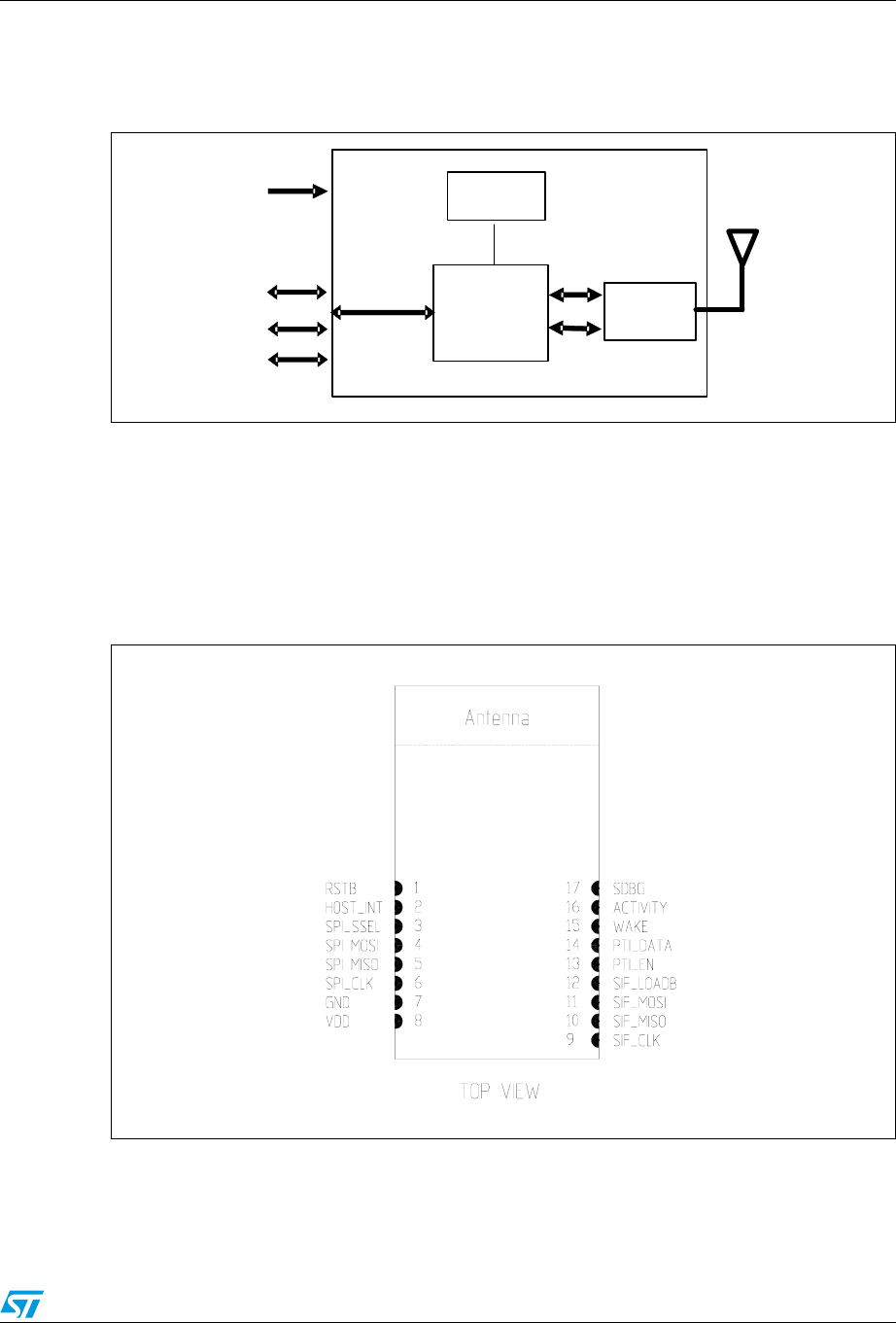
SPZB260 Block diagram
3/14
1 Block diagram
Figure 1. Block diagram
2 Pin settings
2.1 Pin connections
Figure 2. Pin connection diagram
24 MHz
XTAL
SN 260
Tranceiver Balun
Filter
Vdd
SIF
SPI
C
ONTR SIGN
RF
antenna

Pin settings SPZB260
4/14
2.2 Pin description
Table 1. Pin description
Pin n Pin name Direction Description
1 RSTB I Active low reset ( an internal pull-up of 30 kohm typ is provided)
2 HOST_INT O Host Interrupt Signal ( from ZB Module to Host)
3 SPI_SSEL I SPI Slave Select ( from Host to ZB Module)
4 SPI MOSI I SPI Data , Master Out / Slave In ( from host to ZB Module)
5 SPI MISO O SPI Data , Master In / Slave Out ( from ZB Module to host)
6 SPI_CLK I SPI clock
7 GND --- Ground
8VDD --- Input power supply
9SIF_CLK INon-intrusive debug Interface
Serial interface Clock Signal ( internal pulldown)
10 SIF_MISO O Non-intrusive debug Interface
Serial interface Master IN/ Slave Out
11 SIF_MOSI I
Non-intrusive debug Interface
Serial interface Master Out/ Slave In
To guarantee a proper signal level when in deep sleep mode
connect a 10kΩ resistor to GND
12 SIF_LOADB I/O
Non-intrusive debug Interface
Serial interface Load strobe ( Open collector with internal pull-up)
To improve noise immunity connect a 10kΩ resistor to VDD
13 PTI_EN O Frame Signal of Packet Trace Interface (PTI)
14 PTI_DATA O Data Signal of Packet Trace Interface (PTI)
15 WAKE I Wake Interrupt Signal from Host to ZB Module
16 ACTIVITY O Activity signal for application debug /monitor
17 SDBG O

SPZB260 Maximum ratings
5/14
3 Maximum ratings
3.1 Absolute maximum ratings
3.2 Operating ranges
Table 2. Absolute maximum ratings
Symbol Parameter
Values
Unit
Min Max
VDD Module supply voltage -0.3 3.6 V
VIN Input voltage on any digital pin -0.3 Vdd+0.3 V
Tstg Storage temperature -40 +85 °C
Tsold Soldering temperature < 10s 240
Table 3. Operating ranges
Symbol Parameter Conditions
Values
Unit
Min Typ Max
VDD Module supply voltage - 20°C < T < 70 °C 2.1 3.3 3.6 V
Tstg
Operating ambient
temperature -20 +70 °C

Electrical characteristics SPZB260
6/14
4 Electrical characteristics
4.1 DC electrical characteristics
4.2 DC I/O specification
Table 4. DC electrical characteristics
Symbol Parameter Conditions
Values
Unit
Min Typ Max
IRX RX current ( boost mode) Vdd = 3.0 V, T = 25 °C 38 mA
IRX RX current ( normal mode) Vdd = 3.0 V, T = 25 °C 36 mA
ITX TX current ( boost mode) Vdd = 3.0 V, T = 25 °C 42 mA
ITX TX current (normal mode) Vdd = 3.0 V, T = 25 °C 36 mA
IDS Deep sleep current 2.1 < Vdd < 3.6 V
T = 25°C 1µA
Table 5. DC Input / Output specification
Symbol Parameter Conditions
Values
Unit
Min Typ Max
VIL Low Level Input Voltage 2.1 < Vdd < 3.6 V 0 0.2 x Vdd V
VIH High level input voltage 2.1 < Vdd < 3.6 V 0.8 x Vdd Vdd V
Iil Input current for logic 0 2.1 < Vdd < 3.6 V -0.5 mA
Iih Input current for logic 1 2.1 < Vdd < 3.6 V 0.5 mA
Ripu Input pull-up resistor 30 kΩ
Ripd Input pull-down resistor 30 kΩ
VOL Low level output voltage 0 0.18 x Vdd V
VOH High level output voltage 0.82 x Vdd Vdd V
IOHS Output source current 4 mA
IOLS Output sink current 4 mA
IOHH Output source current (pin 15,16,17) 8 mA
IOLH Output sink current (pin 15,16,17) 8 mA
IOTot Total output current for I/O 40 mA
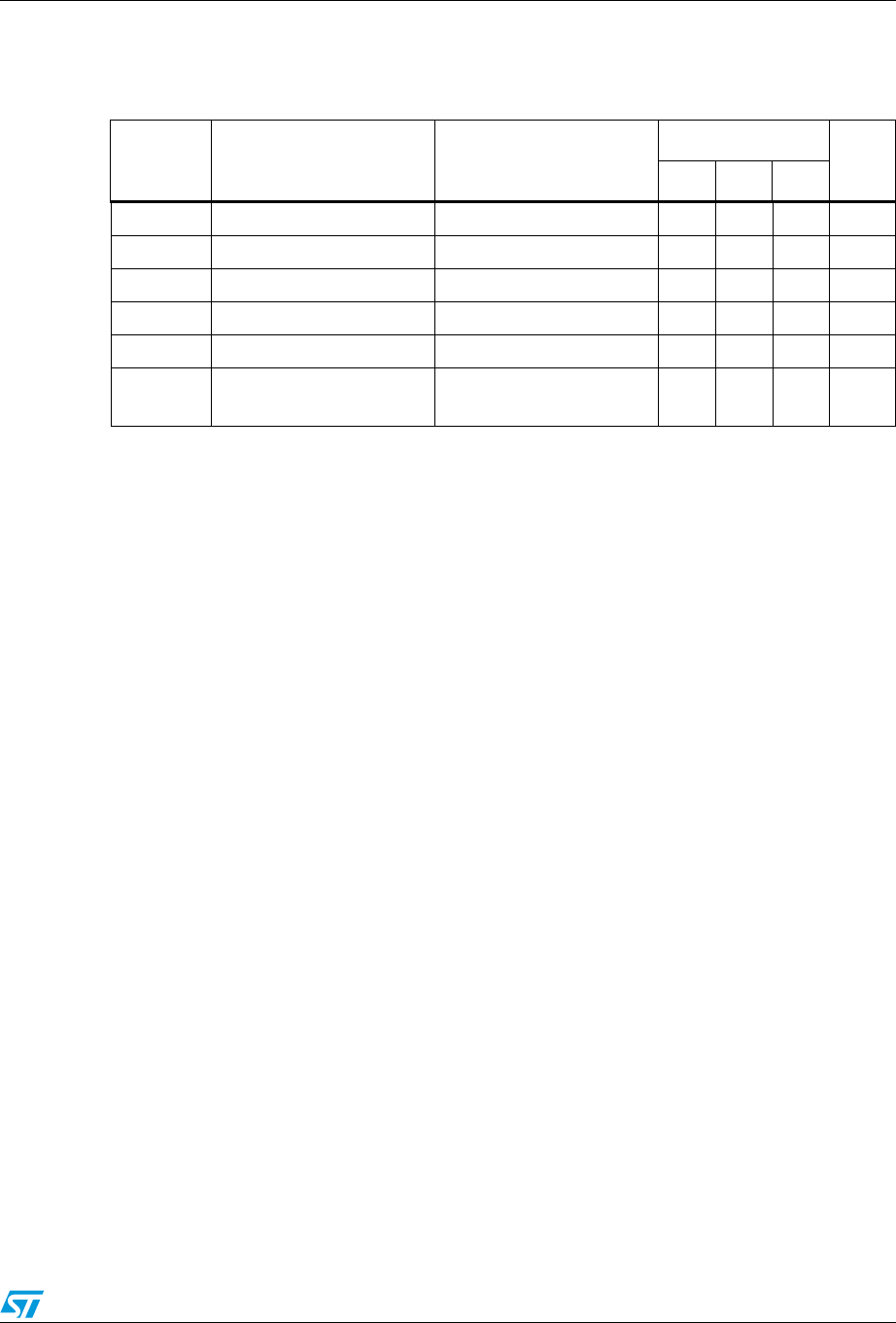
SPZB260 Electrical characteristics
7/14
4.3 RF electrical characteristics
Table 6. RF electrical characteristics
Symbol Parameter Conditions
Values
Unit
Min Typ Max
Frequency range 2.1 < Vdd < 3.6 V 2405 2480 MHz
TX Output power 0 dBm
RX Sensitivity Vdd = 3.0V, 1% PER -92 dBm
CFE Carrier frequency error Vdd=3.0V -20 / + 70 °C -40 40 ppm
Error Vector magnitude Normal / boost mode 15 25 %
Adjacent channel rejection +/- 5 MHz
+/- 10 MHZ
35
40 dBm

Mechanical dimensions SPZB260
8/14
5 Mechanical dimensions
In order to meet environmental requirements, ST offers these devices in ECOPACK®
packages. These packages have a Lead-free second level interconnect . The category of
second level interconnect is marked on the package and on the inner box label, in
compliance with JEDEC Standard JESD97. The maximum ratings related to soldering
conditions are also marked on the inner box label. ECOPACK is an ST trademark.
ECOPACK specifications are available at: www.st.com.
Figure 3. Mechanical dimensions
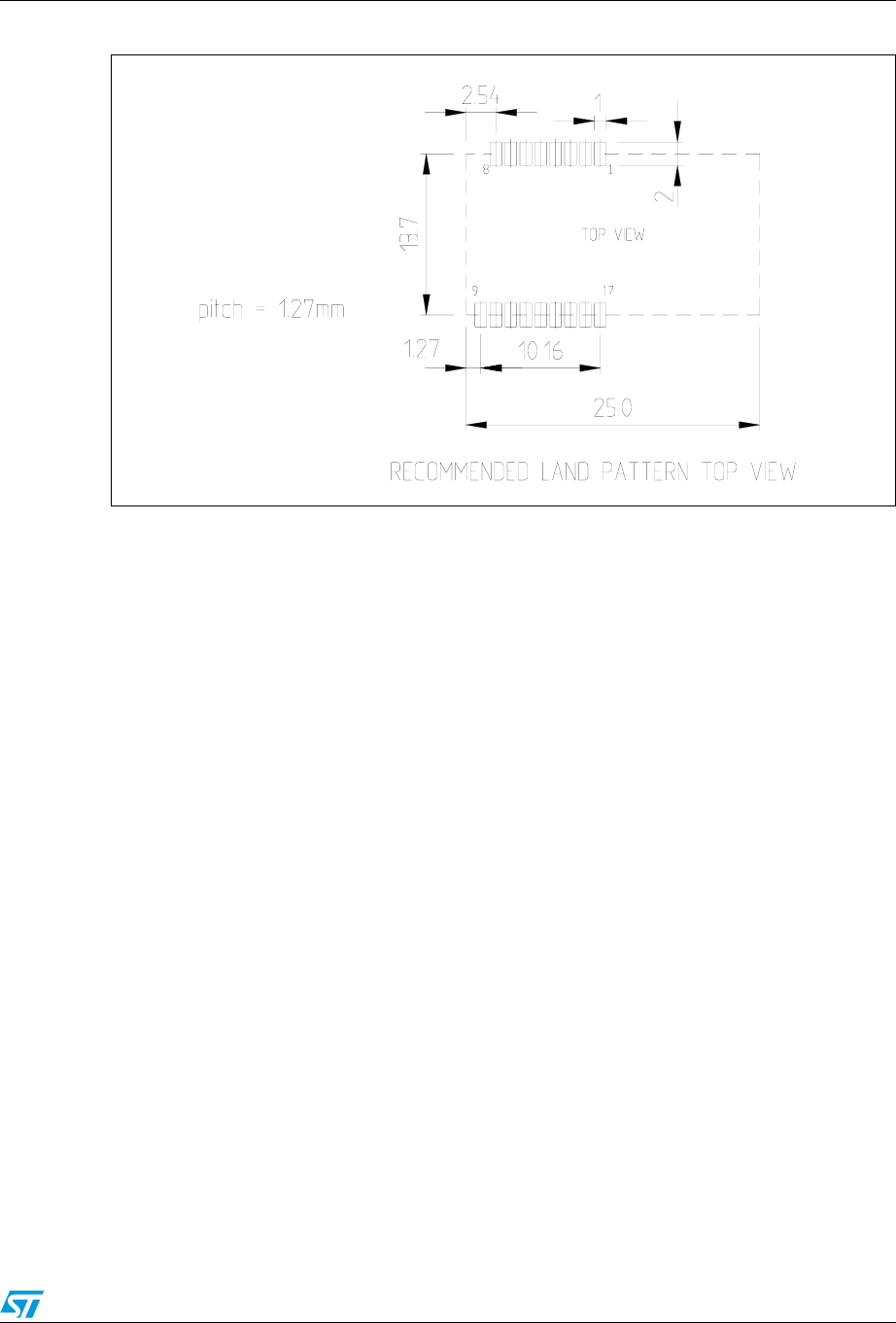
SPZB260 Mechanical dimensions
9/14
Figure 4. Solder pad layout

FCC statement SPZB260
10/14
Appendix A FCC statement
This device complies with Part 15 of the FCC Rules. Operation is subject to the following two
conditions: (1) this device may not cause harmful interference, and (2) this device must
accept any interference received, including interference that may cause undesired
operation.
Note: This equipment has been tested and found to comply with the limits for a Class B digital
device, pursuant to Part 15 of the FCC Rules. These limits are designed to provide
reasonable protection against harmful interference in a residential installation. This
equipment generates, uses and can radiate radio frequency energy and, if not installed and
used in accordance with the instructions, may cause harmful interference to radio
communications. However, there is no guarantee that interference will not occur in a
particular installation. If this equipment does cause harmful interference to radio or
television reception, which can be determined by turning the equipment off and on, the user
is encouraged to try to correct the interference by one or more of the following measures:
●Reorient or relocate the receiving antenna
●Increase the separation between the equipment and receiver
●Connect the equipment into an outlet on a circuit different from that to which the
receiver is connected
Consult the dealer or an experienced radio/TV technician for help.
Antenna
Our module type SPZB260 is for OEM integrations only. The end-user product will be
professionally installed in such a manner that only the authorized antennas are used.
Caution
Any changes or modifications not expressed approved by the part responsible for
compliance could cause the module to cease to comply with FCC rules part 15, and thus
void the user’s authority to operate the equipment.

SPZB260 FCC statement
11/14
A.1 Label instruction
Instruction manual for FCC ID labeling
Module type: ZigBee module SPZB260
FCC-ID: S9NZB260A
This intends to inform you how to specify the FCC ID of our ZigBee module SPZB260 on
your final product.
Based on the Public Notice from FCC, the product into which our transmitter module is
installed must display a label referring to the enclosed module.
The label should use wording such as “Contains Transmitter module FCC ID: S9NZB260A
or “Contains FCC ID: S9NZB260A , any similar wording that expressed the same meaning
may be use.
It shows an example below
A.2 Special requirement for Modular application
The following requirements are fulfilled:
1. The modular transmitter must have its own RF shielding:
The RF module used on the board fulfils the emission requirements of the FCC rules
without additional shielding.
2. The modular transmitter must have buffered modulation/data inputs:
The module has a memory management unit inside of the IC. The processor
interfacing with the external application by means general purpose I/O ( GPIO) , Uart,
SPI. The processor interfaces also the RF part of the module exchanging data and
command with it. Inside the processor a flash memory is available to download the
customer application and the ZigBee profiles.
3. The modular transmitter must have its own power supply regulation:
The IC contains an own voltage regulation. In case of changes in the supply voltage
VCC (for example caused by temperature changes or other effects), the internal
voltage will be stabilized.
4. The modular transmitter must comply with the antenna requirements of Section 15.203
and 15.204:
The RF module is for OEM (Original Equipment Manufacturer) integration only. The
end-user product will be professionally installed in such a manner that only the
authorized antenna is used.
5. The modular transmitter must be tested in a stand-alone configuration:
The RF module was tested in a stand-alone configuration.
6. The modular transmitter must be labelled with its own FCC ID number:
The RF module will be labelled with its own FCC ID number. When the module is
installed inside the end-product, the label is not visible. The OEM manufacturer is
instructed how to apply the exterior label.
Contains FCC ID: S9NZB260A
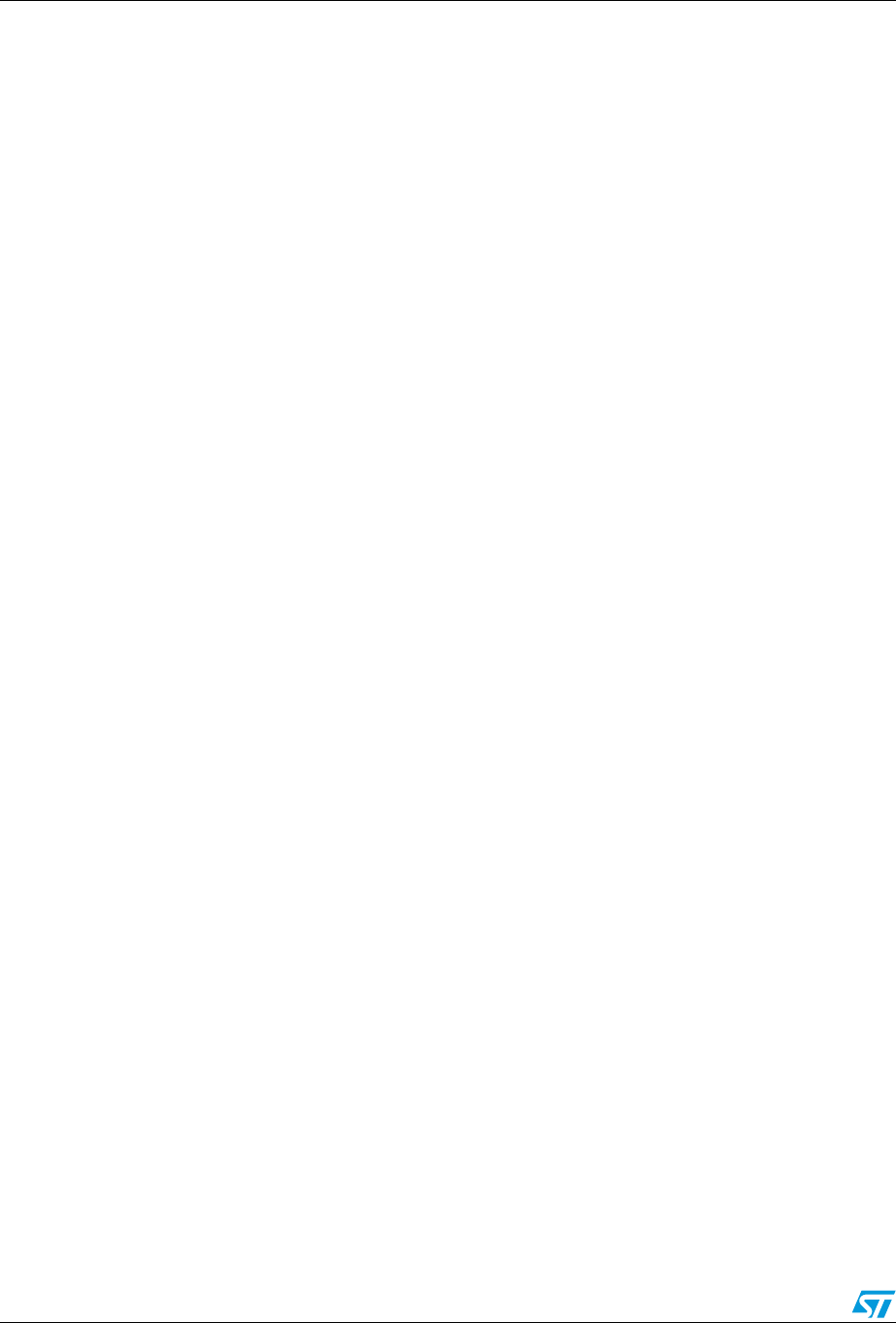
FCC statement SPZB260
12/14
7. The modular transmitter must comply with any specific rule or operating requirements
applicable to the transmitter and the manufacturer must provide adequate instructions
along with the module to explain any such requirements:
The EUT is compliant with all applicable FCC rules. Detail instructions are given in the
product Users Guide.
8. The modular transmitter must comply with any applicable RF exposure requirements.
●Maximum measured power output: 3,08 mW
●Maximum antenna gain: 0,6 dBi = numeric gain 1,148 (see also FCC test report)
Maximum permissible exposure defined in 47 CFR 1.1310: 1 mW/cm².
The RF module operates at low power level so it does not exceed the Commission’s RF
exposure guidelines limits; furthermore, Spread spectrum transmitters operate according to
the Section 15.247 are categorically excluded from routine environmental evaluation.

SPZB260 Revision history
13/14
6 Revision history
Table 7. Document revision history
Date Revision Changes
07-Sep-2007 1 First release
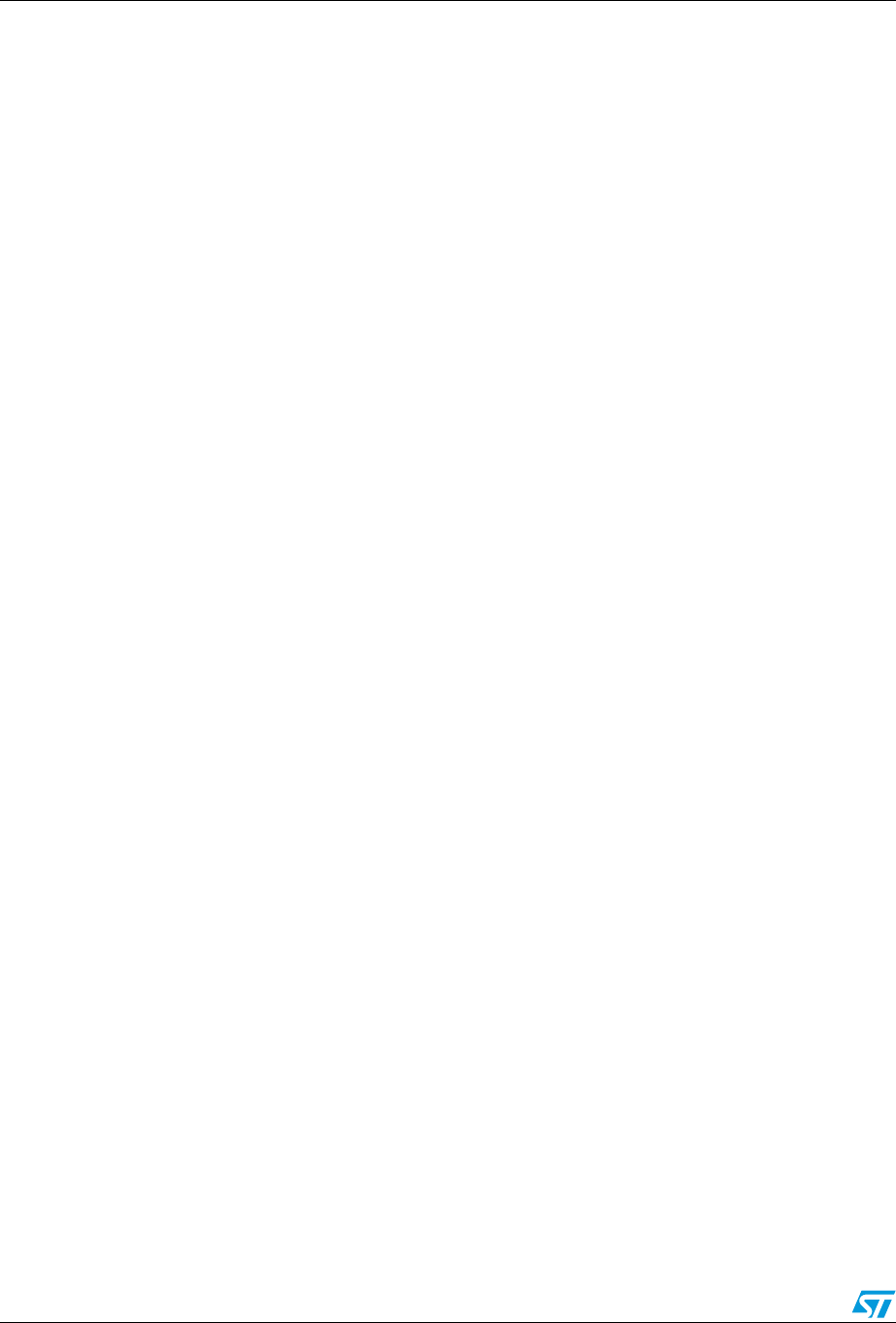
SPZB260
14/14
Please Read Carefully:
Information in this document is provided solely in connection with ST products. STMicroelectronics NV and its subsidiaries (“ST”) reserve the
right to make changes, corrections, modifications or improvements, to this document, and the products and services described herein at any
time, without notice.
All ST products are sold pursuant to ST’s terms and conditions of sale.
Purchasers are solely responsible for the choice, selection and use of the ST products and services described herein, and ST assumes no
liability whatsoever relating to the choice, selection or use of the ST products and services described herein.
No license, express or implied, by estoppel or otherwise, to any intellectual property rights is granted under this document. If any part of this
document refers to any third party products or services it shall not be deemed a license grant by ST for the use of such third party products
or services, or any intellectual property contained therein or considered as a warranty covering the use in any manner whatsoever of such
third party products or services or any intellectual property contained therein.
UNLESS OTHERWISE SET FORTH IN ST’S TERMS AND CONDITIONS OF SALE ST DISCLAIMS ANY EXPRESS OR IMPLIED
WARRANTY WITH RESPECT TO THE USE AND/OR SALE OF ST PRODUCTS INCLUDING WITHOUT LIMITATION IMPLIED
WARRANTIES OF MERCHANTABILITY, FITNESS FOR A PARTICULAR PURPOSE (AND THEIR EQUIVALENTS UNDER THE LAWS
OF ANY JURISDICTION), OR INFRINGEMENT OF ANY PATENT, COPYRIGHT OR OTHER INTELLECTUAL PROPERTY RIGHT.
UNLESS EXPRESSLY APPROVED IN WRITING BY AN AUTHORIZED ST REPRESENTATIVE, ST PRODUCTS ARE NOT
RECOMMENDED, AUTHORIZED OR WARRANTED FOR USE IN MILITARY, AIR CRAFT, SPACE, LIFE SAVING, OR LIFE SUSTAINING
APPLICATIONS, NOR IN PRODUCTS OR SYSTEMS WHERE FAILURE OR MALFUNCTION MAY RESULT IN PERSONAL INJURY,
DEATH, OR SEVERE PROPERTY OR ENVIRONMENTAL DAMAGE. ST PRODUCTS WHICH ARE NOT SPECIFIED AS "AUTOMOTIVE
GRADE" MAY ONLY BE USED IN AUTOMOTIVE APPLICATIONS AT USER’S OWN RISK.
Resale of ST products with provisions different from the statements and/or technical features set forth in this document shall immediately void
any warranty granted by ST for the ST product or service described herein and shall not create or extend in any manner whatsoever, any
liability of ST.
ST and the ST logo are trademarks or registered trademarks of ST in various countries.
Information in this document supersedes and replaces all information previously supplied.
The ST logo is a registered trademark of STMicroelectronics. All other names are the property of their respective owners.
© 2007 STMicroelectronics - All rights reserved
STMicroelectronics group of companies
Australia - Belgium - Brazil - Canada - China - Czech Republic - Finland - France - Germany - Hong Kong - India - Israel - Italy - Japan -
Malaysia - Malta - Morocco - Singapore - Spain - Sweden - Switzerland - United Kingdom - United States of America
www.st.com